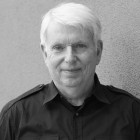


Arthur van Wylick, EDSN
On the Dutch energy market, EDSN manages the data of approximately 14 million gas and electricity customers. Discover how their Lean program provided a major transformation between grid operators, commercial parties and shipping parties in redesigning their metering data processes. Arthur, director of EDSN, shared the absolute highs and some deep lows from the Lean journey that so far has produced the following results: a reduction of handling time of incidents of 65%, improved client satisfaction by 13% and employee satisfaction by 16%. Biography Arthur van Wylick is...
Angela Crone, Bombardier
Since 2010, Bombardier Aerospace IT department in Belfast has been learning about and applying Lean IT principles and tools to improve the value we deliver to our customers. In this session, Angela covered the main elements of this initiative including the application of Kanban and Oobeya to their processes and management approaches. She shared their approach and lessons learnt with the hope it may benefit those beginning their lean implementation. Biography Angela has worked in IT for 26 years most recently as an Application manager responsible for 20 people supporting...
Jeff Gothelf, Lean UX
Requirements-driven product definition is a sure-fire way to get 100% of the wrong product launched. The assumptions that requirements are based on are usually not accurate enough to determine the exact solution those requirements dictate. Instead, teams should focus on creating a series of hypotheses that define potential solutions to their business problem and then work together to learn which of these hypotheses are keepers and which ideas to kill. Biography Jeff is a designer & agile practitioner. He is a leading voice on the topics of Agile UX & Lean UX...
